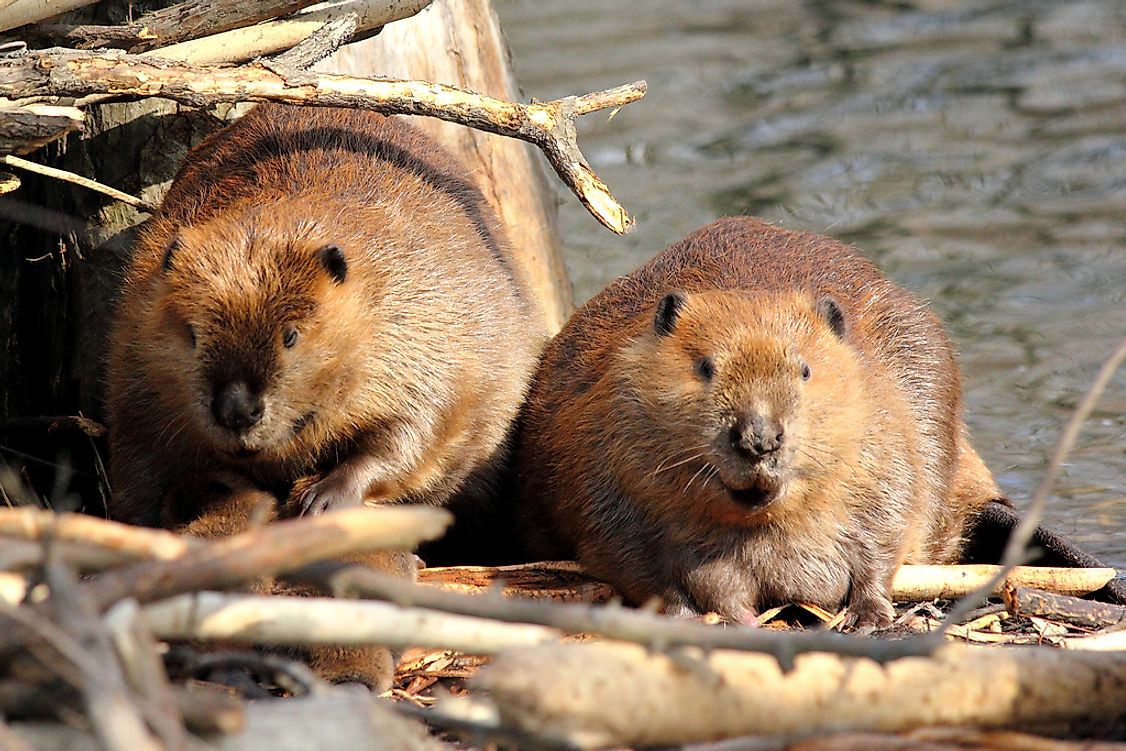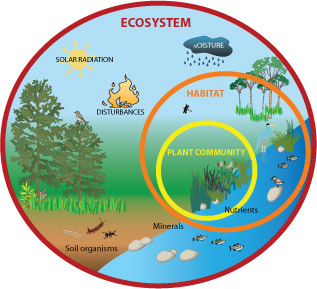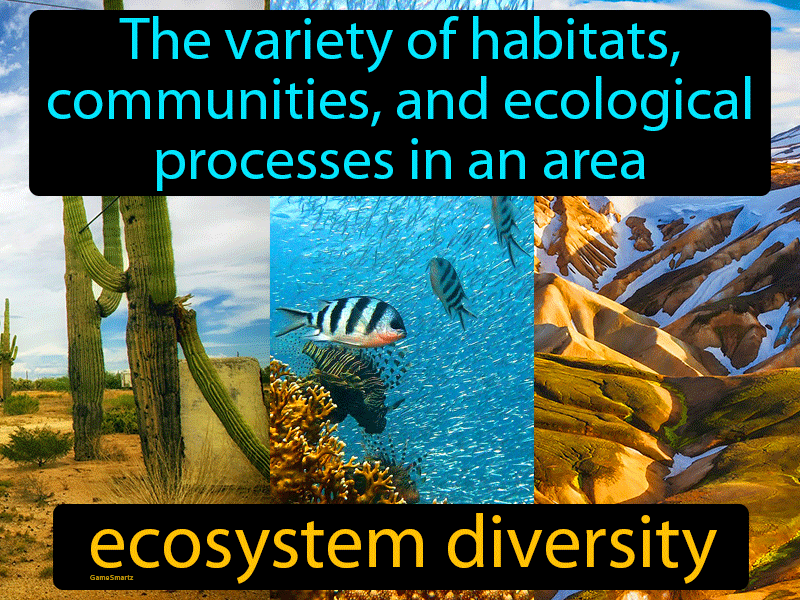Topic what is an ecosystem answer: Discover the fascinating world of ecosystems, where life interconnects in intricate networks, shaping our planet"s diverse habitats and sustaining life.
Table of Content
- What is an ecosystem answer?
- Definition of an Ecosystem
- Components of an Ecosystem: Biotic and Abiotic Factors
- Types of Ecosystems: Aquatic, Terrestrial, and Artificial
- Energy Flow in Ecosystems: Food Chains and Food Webs
- YOUTUBE: What is an Ecosystem?
- Nutrient Cycles: Carbon, Nitrogen, and Water Cycles
- Ecosystem Services: Benefits to Humanity
- Threats to Ecosystems: Pollution, Habitat Loss, and Climate Change
- Conservation Efforts: Protecting and Restoring Ecosystems
- Role of Biodiversity in Ecosystem Health
- Case Studies: Examples of Ecosystem Management
What is an ecosystem answer?
An ecosystem is a complex system made up of living organisms such as plants, animals, and microorganisms, as well as non-living components like air, water, and soil. Here is a breakdown of the key components and characteristics of an ecosystem:
- Community: The community refers to all the different species of organisms living in a particular ecosystem. These organisms interact with one another in various ways, such as through competition, predation, and symbiosis.
- Abiotic factors: These are the non-living components of an ecosystem, including physical factors like sunlight, temperature, water, and soil. These abiotic factors play a crucial role in shaping the environment and influencing the distribution of organisms.
- Food chains and webs: Within an ecosystem, organisms are interconnected through food chains and food webs. Producers, such as plants, convert sunlight into energy through photosynthesis, which is then consumed by herbivores, carnivores, and decomposers in a continuous cycle.
- Energy flow: Energy flows through an ecosystem in a unidirectional manner, starting with producers and moving up the trophic levels. This energy transfer is essential for the functioning of the ecosystem and sustains life within it.
- Biogeochemical cycles: Nutrients such as carbon, nitrogen, and phosphorus are constantly recycled within an ecosystem through biogeochemical cycles. These cycles ensure that essential nutrients are available for all organisms and are not lost from the system.
- Succession: Ecosystems undergo changes over time through a process called ecological succession. This can be primary succession, which starts in a barren area, or secondary succession, which occurs after a disturbance. These changes lead to the development of a more mature and stable ecosystem.
Overall, an ecosystem is a dynamic and interconnected system where living organisms interact with each other and their environment, creating a delicate balance that supports life on Earth.
READ MORE:
Definition of an Ecosystem
An ecosystem is a dynamic complex of plant, animal, and microorganism communities and the nonliving environment, interacting as a functional unit. This intricate network includes all living things (biotic factors) and their interactions with each other, as well as with the nonliving components (abiotic factors) such as climate, water, soil, and sunlight.
- Biotic Components: The living elements like plants, animals, fungi, and microorganisms.
- Abiotic Components: Nonliving factors including water, air, minerals, and sunlight that support life.
Ecosystems can be as large as a desert or as small as a puddle. They are characterized by a web of interactions among organisms and between organisms and their environment, playing a crucial role in maintaining the balance of nature and supporting life on Earth.
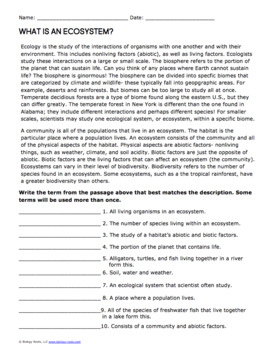
Components of an Ecosystem: Biotic and Abiotic Factors
An ecosystem comprises two main components: biotic, the living organisms, and abiotic, the non-living elements. These components are intricately linked, each playing a crucial role in the ecosystem"s functioning.
Biotic Factors
- Producers: Organisms that synthesize food from inorganic substances, providing energy for the ecosystem (e.g., plants).
- Consumers: Organisms that obtain energy by consuming other organisms, divided into herbivores, carnivores, and omnivores.
- Decomposers: Organisms that break down dead organic material, returning nutrients to the soil (e.g., fungi, bacteria).
Abiotic Factors
- Climate: The long-term patterns of temperature, humidity, wind, etc., influencing the ecosystem"s overall function.
- Water: Essential for all living organisms, affecting their distribution and activities within the ecosystem.
- Soil: Comprises minerals and organic matter, providing a habitat and nutrients for plants and microorganisms.
- Sunlight: The primary energy source for photosynthesis, driving the ecosystem"s energy flow.
Together, these biotic and abiotic components interact in complex ways to form a stable and balanced ecosystem, supporting a diversity of life forms.
Types of Ecosystems: Aquatic, Terrestrial, and Artificial
Ecosystems are broadly classified into three main types: aquatic, terrestrial, and artificial, each with unique characteristics and life forms.
Aquatic Ecosystems
- Freshwater: Includes rivers, lakes, streams, and ponds, characterized by low salt content.
- Marine: Encompasses oceans, seas, and coral reefs, with high salt content and diverse marine life.
Terrestrial Ecosystems
- Forests: Diverse in types such as rainforests, deciduous, and coniferous, rich in flora and fauna.
- Deserts: Arid regions with sparse vegetation, adapted to extreme temperatures and low rainfall.
- Grasslands: Dominated by grasses, these ecosystems are found in regions with moderate to low rainfall.
- Tundra: Characterized by cold temperatures, permafrost, and minimal vegetation, located in polar regions.
Artificial Ecosystems
- Urban: Human-made environments like cities and towns, where nature is integrated into man-made structures.
- Agricultural: Lands altered for the cultivation of crops and livestock, often requiring human intervention to maintain.
Each ecosystem type plays a vital role in the biosphere, supporting a variety of organisms through its unique conditions and resources.

Energy Flow in Ecosystems: Food Chains and Food Webs
The energy flow in ecosystems is a fundamental concept, illustrating how energy moves from one organism to another through food chains and food webs, forming the backbone of ecological stability.
Food Chains
A food chain is a linear sequence of organisms through which nutrients and energy pass as one organism eats another. It begins with primary producers that synthesize energy from sunlight or chemical sources and ends with apex predators, followed by decomposers.
- Primary Producers: Autotrophs like plants and algae that produce energy through photosynthesis or chemosynthesis.
- Primary Consumers: Herbivores that consume primary producers.
- Secondary Consumers: Carnivores that eat herbivores.
- Tertiary Consumers: Predators at the top of the food chain, consuming secondary consumers.
- Decomposers: Organisms like fungi and bacteria that break down dead organic matter, recycling nutrients back into the ecosystem.
Food Webs
Food webs are more complex networks of food chains that intersect, showing how different species are interconnected through various trophic levels. They illustrate the multiple feeding relationships that occur in an ecosystem, emphasizing the interdependence of organisms.
- Food webs demonstrate the complexity of ecosystems, where a single organism can be part of multiple food chains.
- They highlight the importance of each species in maintaining the ecological balance, showing how the removal or addition of one species can affect the entire system.
Understanding energy flow through food chains and webs helps in appreciating the delicate balance of ecosystems and the vital role each organism plays within it.
What is an Ecosystem?
Ecology: Dive into the mesmerizing world of ecology and discover the beauty of nature in perfect harmony. Explore the interconnectedness of all living things and be inspired to protect and preserve our planet. Definition: Unravel the mysteries of various definitions in this thought-provoking video that delves into the meaning and significance behind everyday words. Expand your knowledge and gain a deeper understanding of the world around you.
Define Ecosystem
Definition of ecosystem ? #ranaznain.
Nutrient Cycles: Carbon, Nitrogen, and Water Cycles
Nutrient cycles are crucial for recycling essential elements within ecosystems, ensuring the sustainability of life. The carbon, nitrogen, and water cycles are fundamental to ecosystem dynamics, each facilitating vital processes for organisms.
Carbon Cycle
The carbon cycle involves the movement of carbon between the atmosphere, biosphere, hydrosphere, and lithosphere. It"s essential for the regulation of Earth"s climate and the function of organisms through processes such as photosynthesis and respiration.
- Photosynthesis: Plants convert atmospheric CO2 into glucose.
- Respiration: Organisms release CO2 back into the atmosphere.
- Decomposition: Decomposers break down dead material, releasing carbon.
- Sedimentation: Carbonate sediments form rocks, storing carbon long-term.
Nitrogen Cycle
The nitrogen cycle is essential for converting atmospheric nitrogen into forms usable by living organisms, crucial for proteins and DNA.
- Nitrogen Fixation: Bacteria convert atmospheric nitrogen (N2) into ammonia (NH3).
- Nitrification: Ammonia is converted into nitrites and then nitrates by bacteria.
- Assimilation: Plants absorb nitrates, incorporating them into organic compounds.
- Denitrification: Bacteria convert nitrates back into N2, returning it to the atmosphere.
Water Cycle
The water cycle describes the continuous movement of water on, above, and below the surface of the Earth, crucial for all forms of life.
- Evaporation: Water from oceans and lakes turns into water vapor.
- Condensation: Water vapor cools to form clouds.
- Precipitation: Water falls as rain, snow, etc., replenishing water bodies and soil.
- Infiltration: Water soaks into the ground, recharging aquifers.
These cycles are interconnected, each impacting the other, illustrating the complexity and interdependence of ecosystem processes.
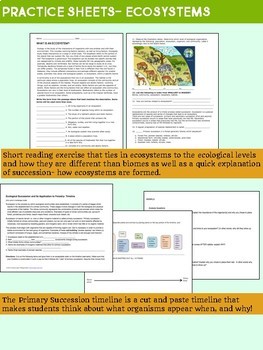
Ecosystem Services: Benefits to Humanity
Ecosystem services are the many and varied benefits that humans freely gain from the natural environment and from properly-functioning ecosystems. Such services include:
- Provisioning Services: The products obtained from ecosystems, including food, fresh water, fuel, fiber, and genetic resources.
- Regulating Services: The benefits obtained from the regulation of ecosystem processes, such as climate regulation, disease control, water purification, and pollination.
- Cultural Services: Non-material benefits people obtain from ecosystems through spiritual enrichment, cognitive development, reflection, recreation, and aesthetic experiences.
- Supporting Services: Those necessary for the production of all other ecosystem services including soil formation, photosynthesis, nutrient cycling, and water cycling.
These services collectively underpin our quality of life, providing essential goods and services, regulating risks and uncertainties, and enriching our cultural and spiritual lives.
Threats to Ecosystems: Pollution, Habitat Loss, and Climate Change
Ecosystems face significant threats that can severely impact their functioning and biodiversity. These threats include pollution, habitat loss, and climate change, each contributing to the degradation of natural environments.
Pollution
- Water Pollution: Contamination of water bodies through chemicals, waste, and other pollutants, affecting aquatic life and water quality.
- Air Pollution: Emission of harmful substances into the atmosphere, leading to respiratory issues in animals and damage to vegetation.
- Soil Pollution: Accumulation of hazardous substances in soil, leading to decreased fertility and affecting plant and animal health.
Habitat Loss
Habitat loss, often due to human activities such as deforestation, urbanization, and agriculture, results in the displacement of species and loss of biodiversity, disrupting ecological balances.
Climate Change
Climate change, driven by global warming, leads to alterations in weather patterns, sea-level rise, and increased frequency of extreme weather events, threatening ecosystems and the species that inhabit them.
Addressing these threats requires concerted global efforts towards sustainable practices, conservation, and restoration initiatives to protect and preserve our planet"s ecosystems for future generations.

Conservation Efforts: Protecting and Restoring Ecosystems
Conservation efforts are critical for protecting and restoring ecosystems, ensuring biodiversity, and maintaining ecological balance. These efforts include a range of strategies and initiatives aimed at preserving natural habitats and species.
- Protected Areas: Establishing national parks, wildlife reserves, and marine protected areas to safeguard habitats and species from human activities.
- Restoration Projects: Rehabilitating degraded ecosystems, such as reforestation of cleared lands and restoration of wetlands and rivers, to revive biodiversity and ecosystem services.
- Sustainable Practices: Promoting sustainable agriculture, forestry, and fishing practices to minimize environmental impact and ensure long-term ecological health.
- Legislation and Policies: Implementing laws and regulations to protect endangered species and habitats, control pollution, and manage natural resources sustainably.
- Community Involvement: Engaging local communities in conservation efforts, recognizing their role in ecosystem management and the benefits of conservation to their livelihoods.
- Research and Monitoring: Conducting scientific research to understand ecosystems better and monitoring changes over time to inform conservation strategies.
Through these efforts, conservation aims to mitigate threats to ecosystems, such as habitat loss, climate change, and pollution, ensuring the resilience and sustainability of our natural world for future generations.
Role of Biodiversity in Ecosystem Health
Biodiversity is the variety and variability of life on Earth, and it plays a critical role in maintaining the health and stability of ecosystems. A high level of biodiversity enhances ecosystem productivity and resilience, offering a range of ecosystem services essential for human survival and well-being.
- Resilience: Diverse ecosystems are more resilient to disturbances, such as diseases, fires, and climate change, enabling them to recover more quickly.
- Productivity: A greater variety of species ensures a wider range of ecosystem services, including oxygen production, pollination, and soil fertility.
- Nutrient Cycling: Different species contribute to the cycling of nutrients, ensuring the sustainability of essential life processes.
- Genetic Diversity: Genetic variability within and between species provides the raw material for adaptation and evolution in the face of environmental changes.
Protecting biodiversity is crucial for ecosystem health, as it supports the complex interactions that underpin our food systems, health, and climate. Conservation efforts aimed at preserving biodiversity are essential for sustaining ecosystems and the services they provide to humanity.
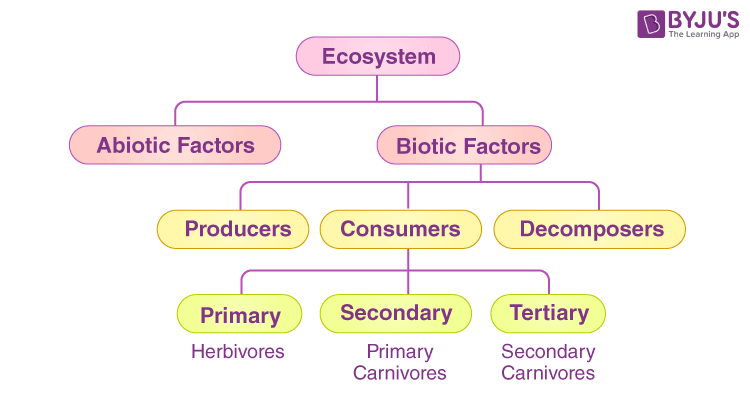
READ MORE:
Case Studies: Examples of Ecosystem Management
Ecosystem management is a process that aims to conserve major ecological services and restore natural resources while meeting the socio-economic, political, and cultural needs of current and future generations. Here are examples of effective ecosystem management:
- The Great Barrier Reef, Australia: Comprehensive management strategies including marine protected areas, pollution reduction, and sustainable tourism to preserve the world"s largest coral reef system.
- The Amazon Rainforest, South America: Efforts to combat deforestation through protected areas, sustainable land use practices, and international cooperation to maintain biodiversity and carbon storage.
- Serengeti National Park, Tanzania: Wildlife conservation programs that balance ecosystem protection with community development to ensure the migration routes of millions of wildebeest and other species are preserved.
- The Everglades, USA: Restoration projects aimed at reestablishing the natural flow of water, controlling invasive species, and rehabilitating habitats to protect this unique wetland ecosystem.
These case studies demonstrate the importance of integrated approaches to ecosystem management that involve conservation, sustainable use, and the participation of local communities.
Understanding ecosystems is crucial for our survival and well-being. By appreciating their complexity and interconnectedness, we can better protect these vital systems for future generations.

